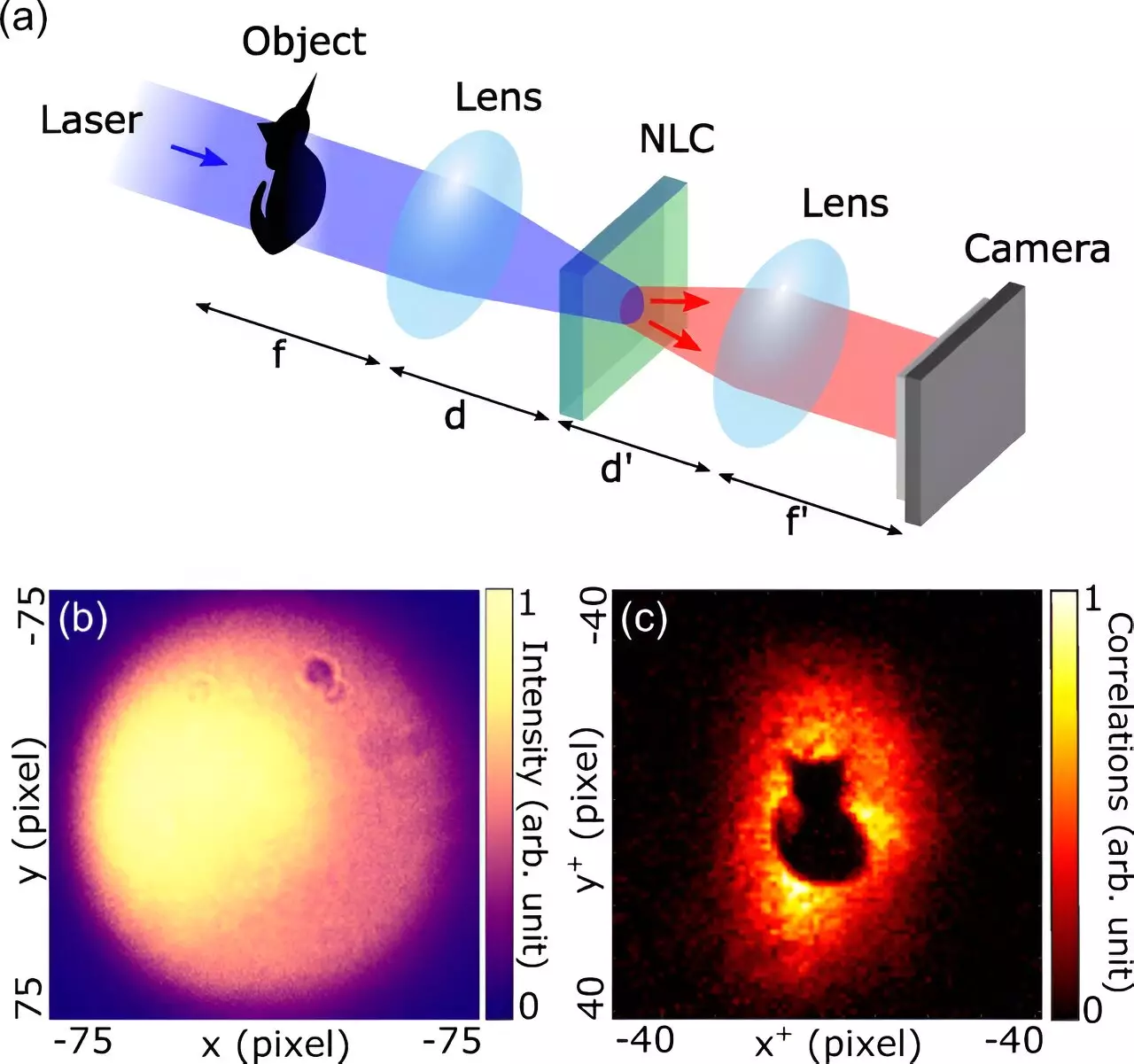In a groundbreaking study, researchers at the Paris Institute of Nanoscience affiliated with Sorbonne University have unveiled a revolutionary technique that encodes images within the quantum correlations of entangled photon pairs. This technique renders the encoded images invisible to traditional imaging methods, opening new vistas in quantum optics and imaging applications. Their findings, published in the esteemed journal Physical Review Letters, highlight the potentially transformative impact of this research on the fields of quantum computing, cryptography, and advanced imaging technologies.
At the heart of this innovation lies the principle of entangled photons, which are indispensable to many quantum photonics applications. These photons are generated through a sophisticated process known as spontaneous parametric down-conversion (SPDC), which takes place within a specially designed nonlinear crystal. Here, a high-energy photon from a blue pump laser is split into two lower-energy entangled photons exhibiting quantum correlations. This process not only highlights the complexity of photon behavior but also underscores the need for precise control over their quantum states to achieve desired outcomes in various applications.
The researchers propose a method that intricately structures the spatial correlations of entangled photons, effectively mapping them onto the shape of an object to be imaged. This involves placing the object in the image plane of a lens positioned anterior to the crystal and employing a secondary lens to project the image onto a camera. In the absence of the nonlinear crystal, this configuration behaves like a conventional two-lens imaging system that would yield an inverted image of the object observed on the camera.
However, upon introducing the crystal, the dynamics change dramatically. The SPDC process generates pairs of entangled photons, and when these are filtered spectrally to isolate the infrared photons, an interesting phenomenon occurs: the camera captures a uniform intensity distribution that reveals no discernible information about the object. This paradox is resolved only when the analysis shifts focus from the direct imaging to the spatial correlations inherent between the entangled photon pairs, allowing researchers to reconstruct the object’s image.
The reconstruction process involves a meticulous capture of each photon’s position in relation to its entangled counterpart. Utilizing a single-photon sensitive camera in conjunction with advanced algorithms enables the detection of photon coincidences throughout the acquisition process. This reveals the hidden spatial correlations, ultimately reconstructing the image originally conveyed by the blue laser beam. As Chloé Vernière, the lead author and Ph.D. student on the project, articulates, this method creates the impression of a lack of information in conventional photon counting. However, by analyzing the concurrent landing of photons and their spatial arrangement, a coherent image starts to emerge from the quantum data.
The implications of this study extend far beyond simple imaging. By leveraging an underexplored degree of freedom in light—specifically, the spatial correlations between pairs of photons—the researchers are set to pioneer new methodologies that may facilitate intricate cryptographic systems and enhance imaging capabilities in areas where scattering undermines traditional techniques. Hugo Defienne, the lead advisor for the study, emphasizes that this imaging technique could serve as a powerful platform for extracting and encoding multiple images within a single stream of photon pairs. By strategically repositioning the camera, researchers could unearth various encoded images, significantly amplifying the amount of information captured and transferred.
This innovative research from the Paris Institute of Nanoscience not only sheds light on the intricate functionalities of quantum mechanics but also introduces an imaginative pathway for future developments in quantum imaging and communication technologies. As the field continues to evolve, such breakthroughs can reshape our understanding of information transfer, leading to enhanced methodologies that could revolutionize cryptography, imaging, and beyond. With the potential to manipulate and harness the very fabric of light, the journey into the quantum realm is just beginning, and the possibilities seem boundless.

